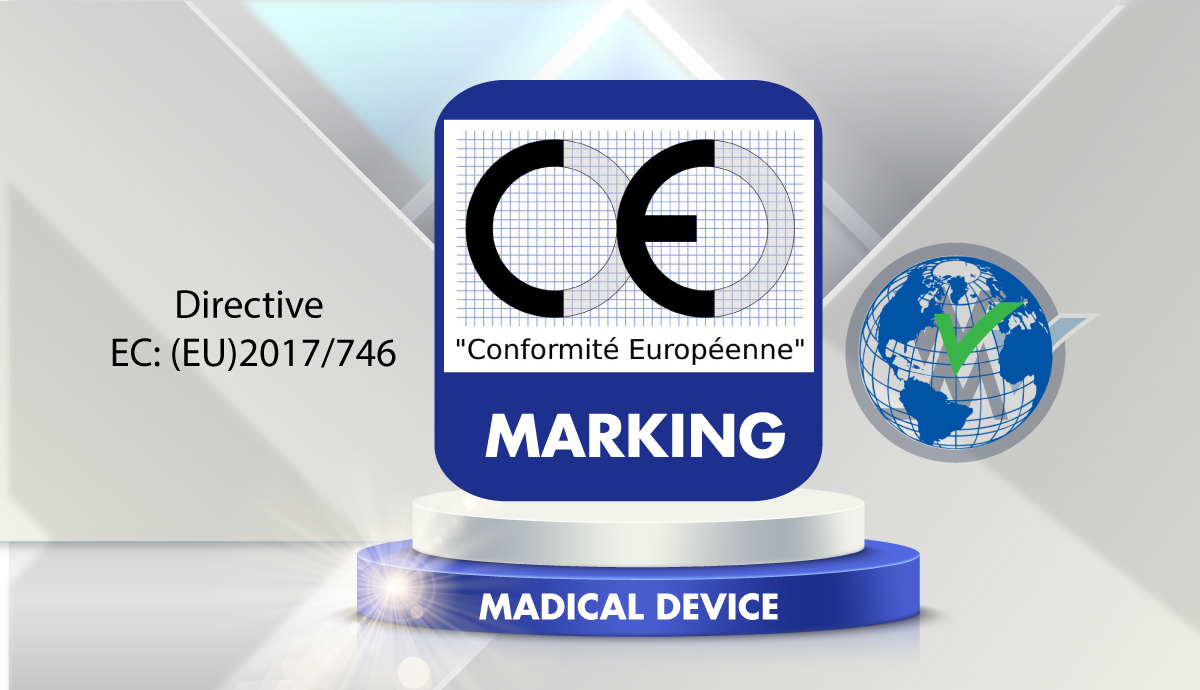REGULATION (EU) 2022/112 OF THE EUROPEAN PLAN AND OF THE COUNCIL.
January 25, 2022.
On amendments to Regulation (EU) 2017/746 concerning transitional provisions for certain in vitro diagnostic medical devices and the deferral of the application of conditions for internal devices.
Pursuant to the Treaty on the Functioning of the European Union, and in particular Article 114 and Article 168(4), subparagraph (c), where:
Considering the proposal of the European Commission,
After transferring the draft legislative act to the national parliaments,
Considering the opinion of the European Economic and Social Commission,
After consulting with the Committees of the Regions,
Acting in accordance with the usual legislative procedure.

Whereas:
(1) Regulation (EU) 2017/746 of the European Parliament and of the Council (3) establishes a new regulatory framework to ensure the smooth functioning of the internal market in relation to diagnostic medical devices. In vitro diagnostics are governed by that Regulation, taking that as the basis for the level of health protection for patients and users, and taking into account small and medium enterprises operating in this field. At the same time, Regulation (EU) 2017/746 sets a high set of quality and safety standards for in vitro diagnostic medical devices to address the general safety concerns associated with such devices. . Furthermore, Regulation (EU) 2017/746 significantly reinforces key elements of the regulatory approach existing in Directive 98/79/EC of the European Parliament and of the Council (4), such as monitor notified bodies, classify risks, assess procedural suitability, evaluate performance and study performance, vigilance and monitor markets, and provide transparency and traceability for in vitro diagnostic medical devices.
(2) The COVID-19 pandemic and related public health crisis have and continue to present an unprecedented challenge to Member States and an enormous burden on national authorities. governments, health organizations, Union citizens, notified bodies and economic operators. The public health crisis has created exceptional situations that require significant additional resources, as well as the increasing availability of critically important in vitro diagnostic medical devices, which are not reasonably foreseeable at the time of application of Regulation (EU) 2017/746. Such special circumstances have a significant impact on the various areas covered by that Regulation, such as the designation and operation of notified bodies as well as the marketing and provision of services. supply of in vitro diagnostic medical devices on the market within the Union.
(3) In vitro diagnostic medical devices are essential to the health and safety of Union citizens, and in particular SARS-CoV-2 tests, which are vital in the fight against epidemic. It is therefore necessary to ensure that there is a constant market supply for such devices within the Union.
------------
(1) Opinion dated December 8, 2021 (not yet published in the Official Gazette).
(2) The position of the European Parliament 15 December 2021 (not yet published in the Official Gazette) and the Council's decision
December 20, 2021.
(3) Regulation (EU) 2017/746 of the European Parliament and of the Council of 5 April 2017 on in vitro diagnostic medical devices and the repeal of Directive 98/79/EC and the Decision of Commission 2010/227/EU (OJ L 117, May 5, 2017, p. 176).
(4) Directive 98/79/EC of the European Parliament and of the Council of 27 October 1998 on in vitro diagnostic medical devices (OJ L 331, 12 July 1998, p. 1).
(4) Given the unprecedented severity of the current challenges, Member States, health organisations, notified bodies, economic operators and other stakeholders need resources additional measures to combat the COVID-19 pandemic and the current limited capacity of notified bodies, and considering the complexity of Regulation (EU) 2017/746, it is likely that Member States Members, medical institutions, notified bodies, economic operators, and other stakeholders will not be able to guarantee the correct implementation and full application of such Regulation as of May 26, 2022 because of the lies in it.
(5) In addition, the current transition period is set out in Regulation (EU) 2017/746 on the validity of certificates issued by notified bodies for in vitro diagnostic medical devices. under Directive 98/79/EC will end on the same day as the transition period provided for in Regulation (EU) 2017/745 of the European Parliament and of the Council (5) on the entry into force of certain declarations. EC declaration of conformity and certification issued by notified bodies for medical devices in accordance with Council Directives 90/385/EEC (6) and 93/42/EEC (7), i.e. on May 26, 2024.
This puts a strain on people handling both medical devices and diagnostic medical devices in vitro.
(6) To ensure the smooth functioning of the internal market and a high degree of protection for public health and patient safety, as well as to provide legal certainty and avoid the possibility of market disruption, it is necessary to extend the transition periods outlined in Regulation (EU) 2017/746 for equipment certified by an agency notification under Directive 98/79/EC. For the same reasons, sufficient transition time should also be provided for devices to undergo a notified body conformity assessment for the first time under Regulation (EU) 2017/746.
(7) With regard to the time period required to expand the capacity of notified bodies, a balance should be made between the limited availability of such agencies and ensuring a level of public health protection. high. Therefore, the transition stages for in vitro diagnostic medical devices must first undergo a conformity assessment process involving a notified body under Regulation (EU) 2017/ 746 to allow the distinction between higher-risk and lower-risk devices. The length of the transition period will depend on the risk class of the equipment involved, so it will be shorter for devices in the higher risk category and longer for devices in the higher risk category. lower risk category.
(8) To allow for in vitro diagnostic medical devices that have been lawfully placed on the market under the transitional provisions set forth in this Regulation, sufficient time to continue to be made available on market, including for end-user supply or entry into service, the sale date of 27 May 2025 as set out in Regulation (EU) 2017/746 must be adjusted to take into account additional transitional periods specified in these Regulations.
(9) With regard to the resources required by health organizations in the fight against the COVID-19 pandemic, such organizations should have more time to prepare to meet the specific conditions for production. manufacture and use of devices within the same medical organization ('indoor devices') are covered by Regulation (EU) 2017/746. Therefore, the application of such conditions should be deferred. Since medical organizations need a complete overview of the CE-marked in vitro diagnostic medical devices commercially available, it is imperative that the medical organization demonstrate that the needs are specific target patient population cannot be met or cannot be met at an appropriate level of performance, by a commercially available equivalent device will not be applicable until the transition period provided for in these Regulations ends.
(10) Therefore, Regulation (EU) 2017/746 should be revised accordingly.
-----------
(5) Regulation (EU) 2017/745 of the European Parliament and of the Council of 5 April 2017 on medical devices, amending the Directive
2001/83/EC, Regulation (EC) No 178/2002 and Regulation (EC) No 1223/2009 and repeal of Council Directives 90/385/EEC and 93/42/EEC (OJ L 117, 5.5) .2017, page 1).
(6) Council Directive 90/385/EEC of 20 June 1990 on the approximate application of Member State legislation relating to active implantable medical devices (OJ L 189, July 20, 1990, page 17).
(7) Council Directive 93/42/EEC of 14 June 1993 concerning medical devices (OJ L 169, 12.7.1993, p. 1).
(11) For the purposes of this Regulation, in particular to prolong the transition periods set out in Regulation (EU) 2017/746, to introduce additional transitional provisions in that Regulation and to delay postponing the application of the provisions of that Regulation with respect to internally by devices, which cannot be fully achieved by Member States but which, instead, due to their size and impact, can be achieved For better results at the Union level, the Union may apply measures, subject to the principle of complementarity as set forth in Article 5 of the Treaty on the European Union ('TEU'). Subject to the principle of proportionality as set forth in that Clause, this Regulation shall not exceed what is necessary to achieve those objectives.
12) The application of this Regulation takes place in the special circumstances arising from the COVID-19 pandemic and the related public health crisis. To achieve the intended effect of the amendment of Regulation (EU) 2017/746 regarding transition periods, additional transition provisions and the application of provisions relating to internal devices , especially in order to provide legal certainty to economic operators, it is necessary for this Regulation to come into force before May 26, 2022. Therefore, providing an exception for The eight-week period mentioned in Article 4 of Protocol 1 on the role of national parliaments in Europe is appropriate. Union, incorporated into the TEU, into the Treaty on the Functioning of the European Union and the Treaty establishing the European Atomic Energy Community.
(13) Due to the urgent need to immediately address the public health crisis related to the COVID-19 pandemic, this Regulation will enter into force as a matter of urgency on the date of publication in the Official Gazette of the United Nations. European Union.
HAVE APPROVED THIS REGULATION:
Regulation (EU) 2017/746 is amended as follows:
(1) Article 110 is amended as follows:
(a) paragraph 2 is amended as follows:
(i) in the first subparagraph, the date '27 May 2024' is replaced by '27 May 2025';
(ii) in the second subparagraph, 'May 27, 2024' is replaced by 'May 27, 2025';
(b) paragraphs 3 and 4 are replaced by the following:
‘3. By violating Article 5 of this Regulation, the equipment referred to in the second and third subparagraphs of this paragraph may be placed on the market or put into service until the date specified in the subparagraphs. provided that, as of the date of application of this Regulation, such devices continue to comply with Directive 98/79/EC and provided that there are no significant changes in the design and intended purpose opinions of those devices.
Equipment with a certificate issued under Directive 98/79/EC and valid under paragraph 2 of this Article may be placed on the market or put into service until 26 May 2025.
Ins accordance with that Directive and, for such devices, conformity assessment procedures under this Regulation requiring the participation of a notified body, which may be placed on the market or put into service until next day:
(a) Sewing 26, 2025, for class D equipment;
(b) Sewing 26, 2026, for class C equipment;
(c) Sewing 26, 2027, for class B equipment;
(d) May 26, 2027, for Class A devices placed on the market under sterile conditions.
By violating the first subparagraph of this paragraph, the requirements of this Regulation relating to post-market surveillance, market surveillance, vigilance, registration of economic operators and of equipment shall apply to the equipment referred to in the second and third subparagraphs of this article instead of the respective requirements of Directive 98/79/EC.
Without prejudice to Chapter IV and paragraph 1 of this Article, the notified body that has issued the certificate referred to in the second paragraph of this paragraph shall continue to be responsible for the appropriate oversight of all applicable requirements. practices related to the devices they have certified.
4. Devices legally placed on the market under Directive 98/79/EC prior to May 26, 2022 may continue to be placed on the market or put into service until May 26. year 2025.
Devices legally placed on the market from 26 May 2022 under paragraph 3 of this Article may continue to be placed on the market or put into service until the following dates:
(a) May 26, 2026, for the devices referred to in paragraph 3, second subparagraph, or in paragraph 3, third
subparagraph, point (a);
(b) May 26, 2027, for the equipment referred to in paragraph 3, third subparagraph, subparagraph (b);
(c) May 26, 2028, for the equipment referred to in paragraph 3, third subparagraph, subparagraphs (c) and (d).';
(2) in Article 112, second paragraph, the date 'May 27, 2025' is replaced by 'May 26, 2028';
(3) in Article 113(3), add the following points:
(i) Articles 5(5), points (b) and (c) and (e) to (i), shall apply from 26 May 2024;
(j) Article 5(5), subparagraph (d), shall apply from 26 May 2028.’
This regulation will enter into force on the date of publication in the Official Gazette of the European Union. This provision shall be in full force and effect directly in all Member States.
Done in Brussels, January 25, 2022.






